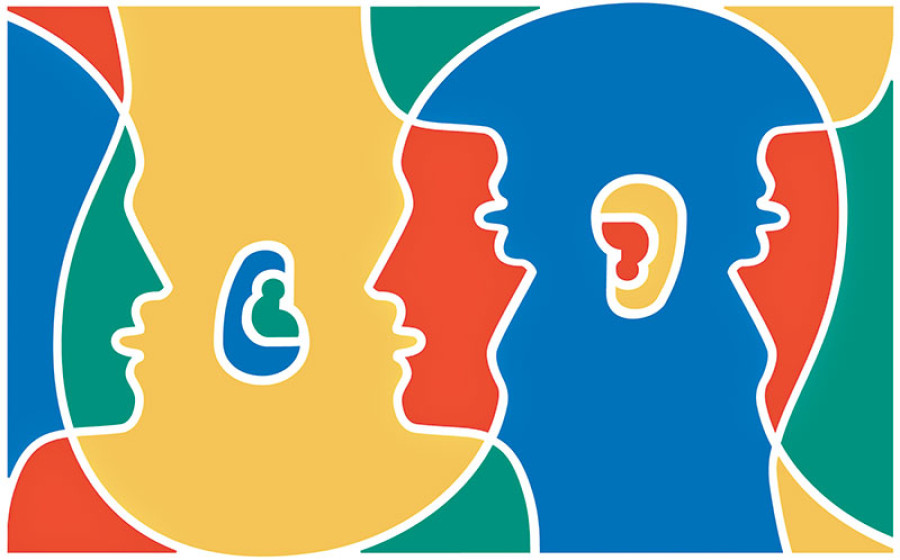Opinion
Hybrid identities
Higher degree of liberalism regarding inter-ethnic marriages nowadays is reflective of a social change
Deepak Thapa
When I got married 14 years ago, a columnist friend had used the example of my wedding to comment critically about how taxing such events can be on those invited to take part in the celebrations. The source of his vexation was the fact that he was forced to fete my wife and me a total of four times. That was because he was known to my wife’s family as well, and so was invited to events on the other side, too. (Of course, he was prudent enough not to mention the fifth—my bachelor’s party—which he partook in to the hilt, but which for seemingly obvious reasons did not qualify as taxing enough.)
I start on this personal note to state with no exaggeration that it is such a relief that the current wedding season is finally over. For, apart from the gastronomic delights (and disasters), the most difficult part of the onset of the period of the nuptials is having to manage time to attend them all, which is what my columnist friend had moaned about with respect to my own. As it so happened, I was invited to six weddings this past season, and five involved close relatives, meaning that my presence was warranted on numerous occasions in each of those five.
What was striking though was that of the six weddings, five involved couples who had crossed social boundaries and entered into what anthropologists call exogamous relationships, or what we in Nepal commonly, albeit erroneously, refer to as ‘inter-caste’ marriages. As a quip put it to me, one reason there are many more wedding events to attend is because of the growing acceptance, and public celebration, of such unions.
A quip being a quip, we do not necessarily have to take his word for it. There could be any number of reasons for this, including the most apparent one of a growing and wealthier population of near and dear ones. But there is no denying that there is evidence of a higher degree of liberalism regarding inter-ethnic marriages nowadays. Whereas, earlier, such marriages would usually involve elopement by the young couple before being rehabilitated quietly after a lapse of time, or, in some cases, never at all.
Recalling David Gellner
We remember that the main cause of the dissolution of the first Constituent Assembly in 2012 was disagreement over the kind of federalism Nepal should adopt. Of the two opposing sides, one called for recognition of identity as the basis of political delineation while the other stood vehemently against it. A major argument used by the latter group was the fact that there are few places in Nepal where any ethnic or caste group lives in isolation since migration over the centuries had resulted in mixed communities almost everywhere. An example of the depth of social linkages used repeatedly by people prominent or otherwise in op-eds at that time was to point out who among their family members had married outside of their social group, that Nepal is indeed a ‘garden of 24 flowers’, and federalism along ethnic lines would unravel this social compact evolved over generations. It is a reflection of the social conservatism of Nepali society that I do not recall any of these writers mentioning conjugal relationships between Dalits and non-Dalits but that is another story altogether.
Although the intent was quite different, this line of argument had been presaged by some years by the Oxford scholar, David Gellner. Presenting at the 2003 conference on inclusion in Nepali democracy, Gellner had pointed out the ‘enormous amount of ethnic and caste intermixing in Nepal’s history’. He continued: ‘It would be ironic now if, as an artifact of modernity, ethnic groups and castes were to acquire rigidity and a purity that they never possessed in the past. Those who want to “build the nation” as well as to protect and preserve ethnic cultures (and the vast majority of ethnic activists do so claim) would surely welcome that these heritages should “belong to” the nation as a whole, and not just to a few purists.’
Gellner had concluded by saying that Nepal’s hybridity ‘needs to be both recorded and celebrated’ and that ‘doing so may be one way in which greater minority rights can coexist satisfactorily with greater national unity’. At the conference itself, scholar Harka Gurung had berated Gellner for suggesting that Nepalis acknowledge the hybrid nature of its society by pointing out that hybrids are derogatorily referred to as khachhar in Nepal, and that khachhar is also the term used for mules, which by nature are infertile. Gurung’s dismissal of Gellner was followed by a number of writings by Janajati activists, one of which declared: ‘Hybridity offers no meaning when you are seeking to establish your fundamental rights.’
In his defence, Gellner later wrote: ‘I think that the hybrid facts of Nepal’s history are there in the historical record. My suggestions were indeed meant to enable positive discrimination to co-exist with a new multi-culturalist sense of Nepali national unity, one which recognizes diversity while simultaneously emphasizing equality and shared cultural heritages.’
Towards greater hybridisation
That was 15 years ago. And, while recognising that there are still atrocities against Dalit–non-Dalit couples there is no denying that social change has become even more pronounced on the question of marriage since then. I take a couple of personal examples below.
The Kathmandu locality I have lived in for more than four decades is home to a large Bahun family now divided into many households. Although relations between that family and ours soon developed into an intimacy beyond the realm of neighbourly courtesy, as children, my siblings and I knew very well that our neighbours’ kitchens were strictly out of bounds for us. Despite this orthodoxy ingrained within that family, it has been no match for the times, and in recent years this same family has more than once openly welcomed ‘inter-caste’ unions in the younger generation even though so far it has been limited to Janajatis only.
Getting even more personal, having made the temporally and spatially long journey from Tanahun to Kathmandu via the Indian Northeast, for my father’s side of the family exogamy has been quite common, extending down to my parents themselves. But, when I got married into a Kathmandu Chhetri family, among my in-laws, it was the first time this boundary had been transgressed openly. Yet, our marriage was only a precursor of what was to come since members of my wife’s extended, and rather tradition-bound, family have routinely sought partners outside the Chhetri fold. That has included the breaking down of the ultimate taboo in Hindu society—marriage with a Dalit, and without the kind of social sanction either on the happy couple or on the family that would have been a given not many years ago.
This ongoing shift in societal relations can only accelerate over time, and that some kind of recognition is long overdue. Gone are the days when familial constraints made cross-ethnic marriages identify with one part of the family only, mostly the father’s. With such marriages openly celebrated, the progeny of such unions cannot but be shaped by the socio-cultural values from both the maternal and paternal sides. Hence, labelling them as belonging to this caste or that ethnicity hardly makes any sense. I have personal experience of that and I can assure readers it really does not.
That is why I cannot but agree with Gellner in his prescription back then: ‘My suggestion is that in future the census should acknowledge this hybridity by allowing, and perhaps even encouraging, people to tick more than one box in the ethnicity/caste question.’ The last time around, I had provided a hybrid identity for my daughter and explained to the census-taker why I was doing that. I doubt she understood my point. Hybrid identities certainly did not show up in the census report.




 7.12°C Kathmandu
7.12°C Kathmandu










